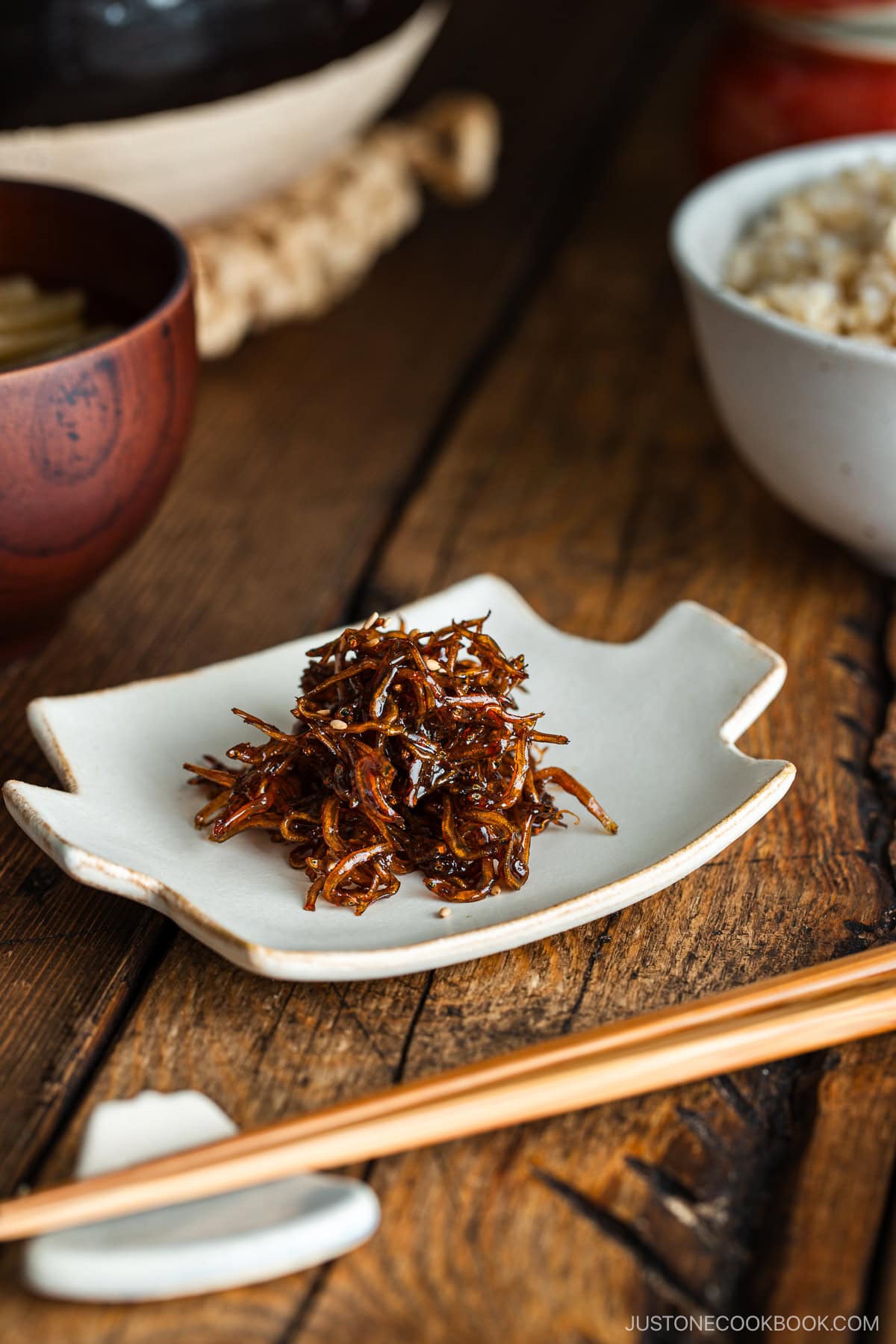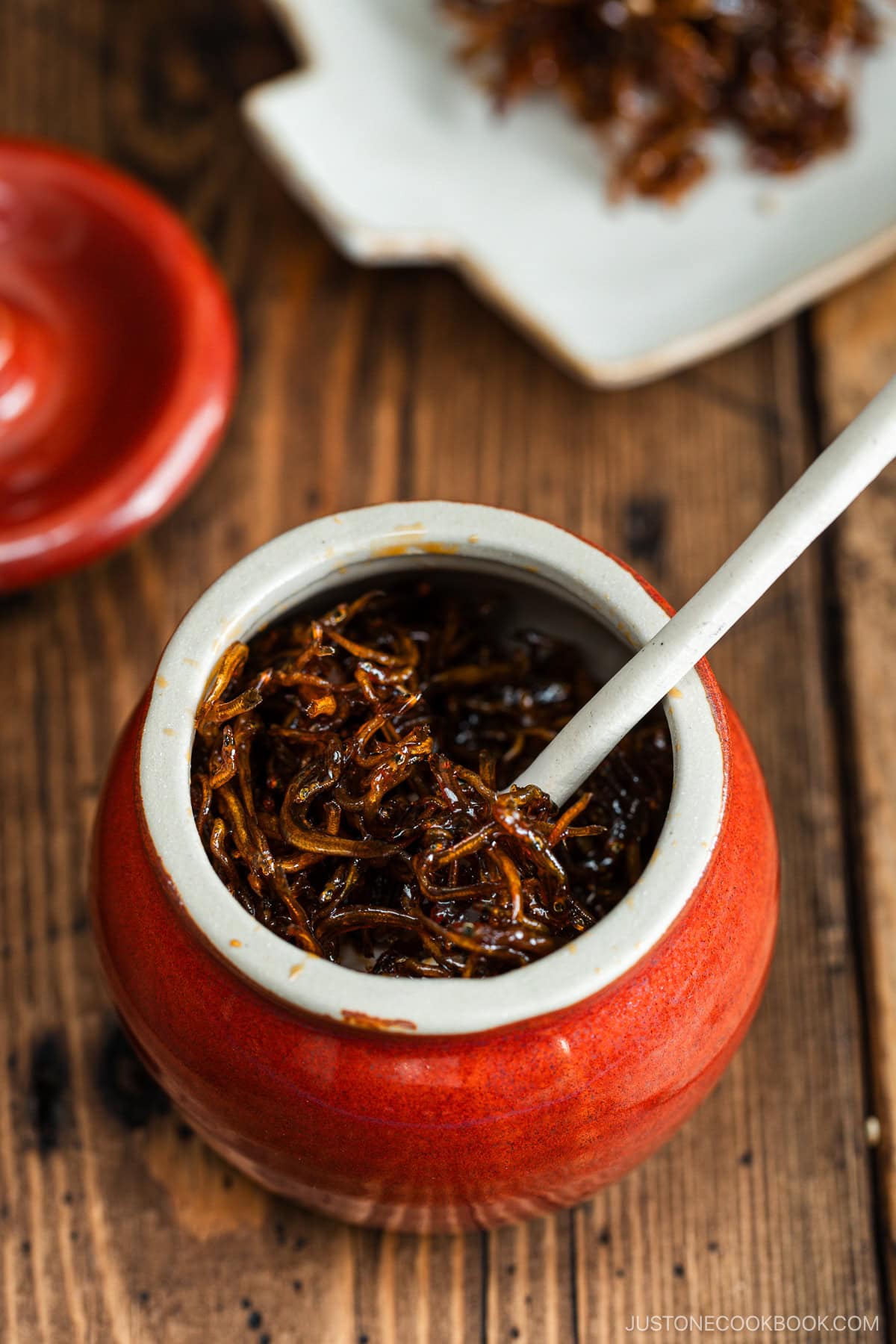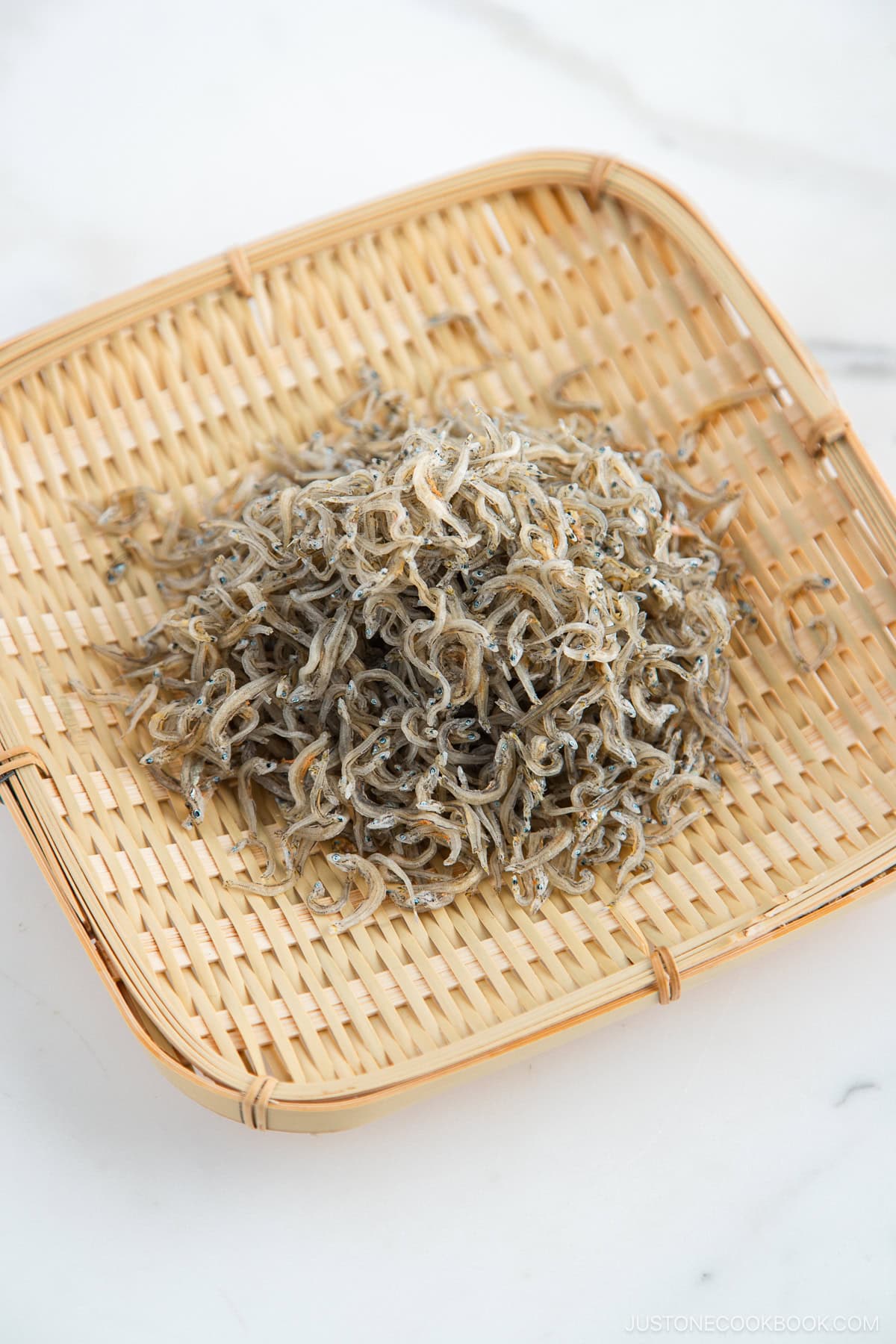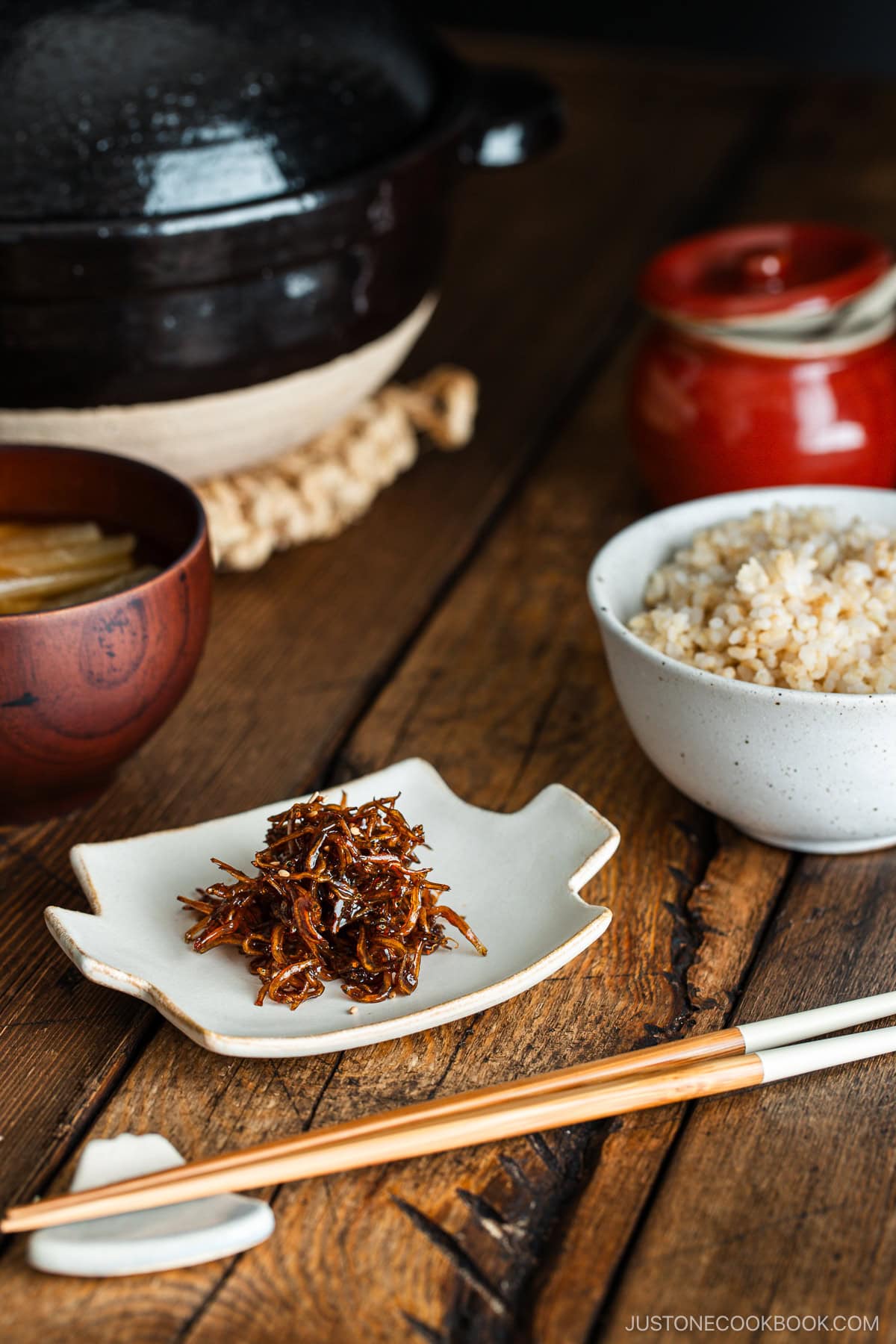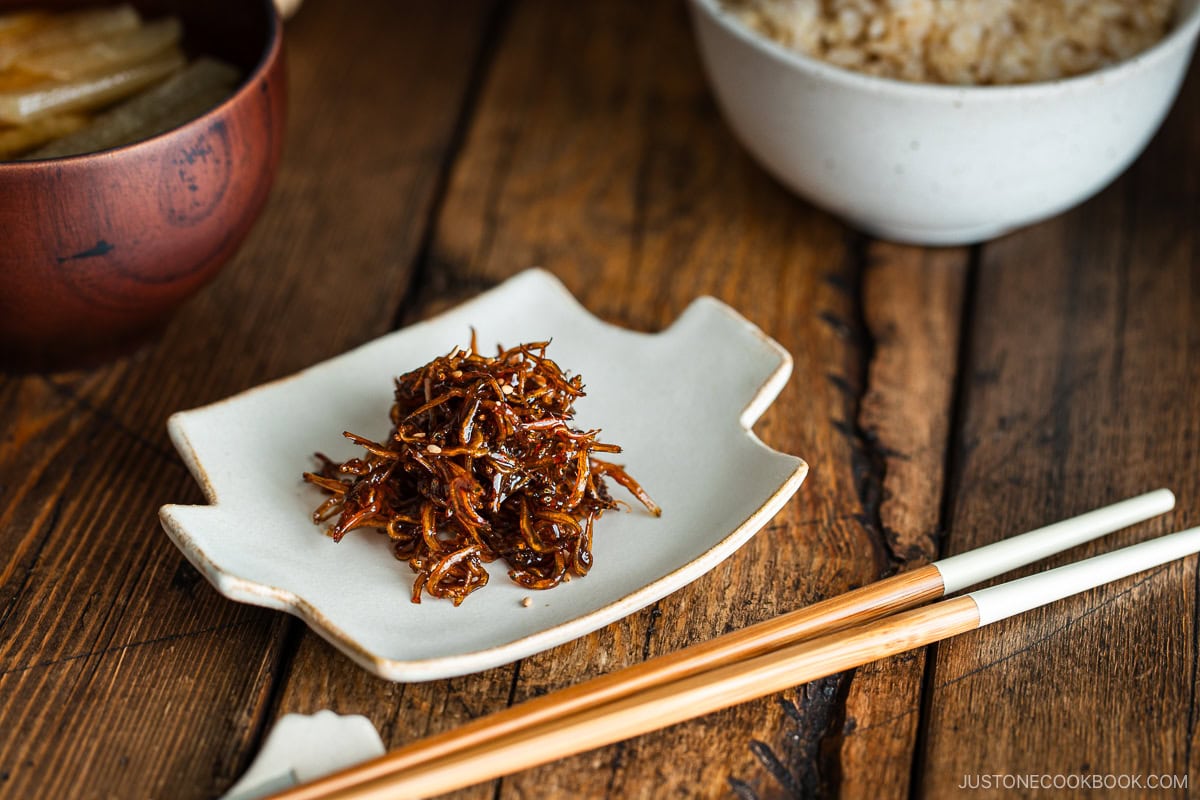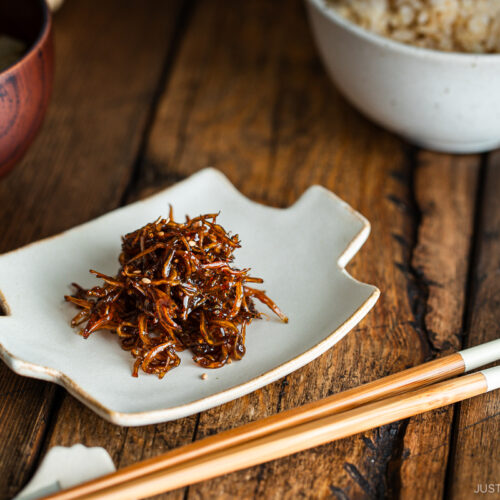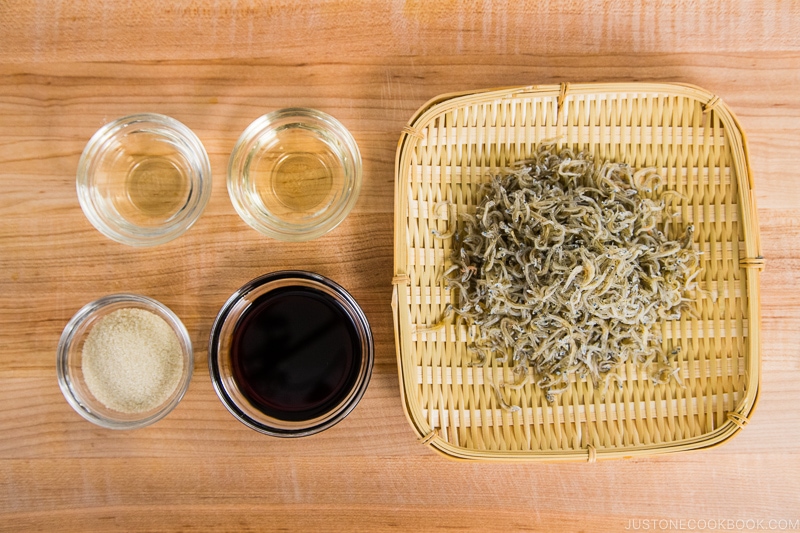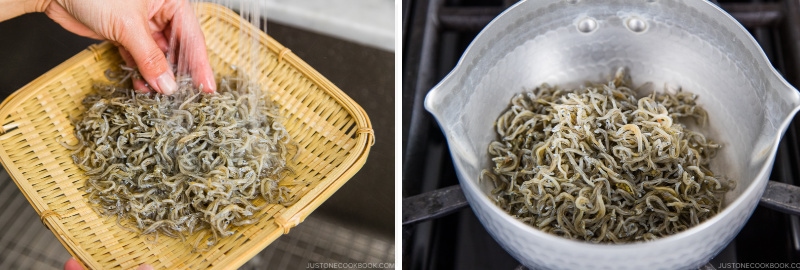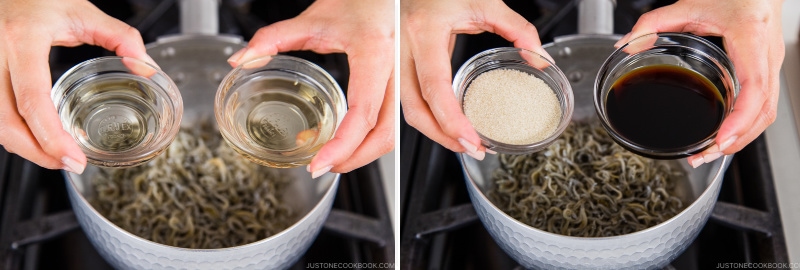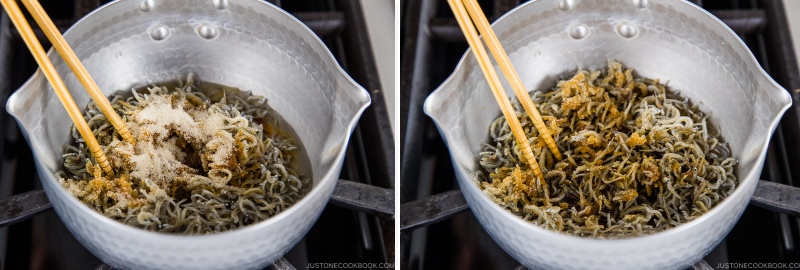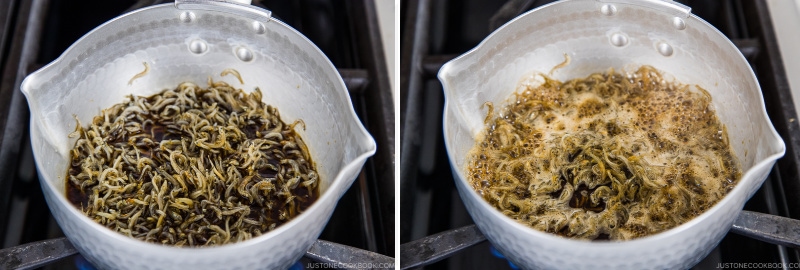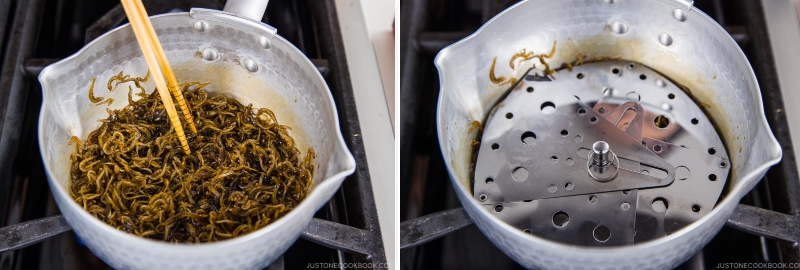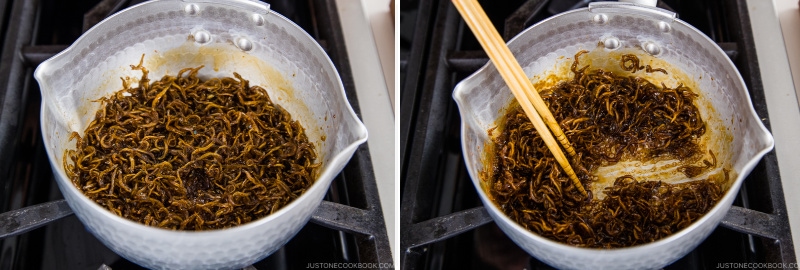At a typical Japanese meal, you can often find an alluring variety of small plates that offers a blast of flavor. These tasty sides include a simmered preserved dish known as Tsukudani. Intensely flavored, Tsukudani is very much like tsukemono (Japanese pickles). Both play an important role in complementing, contrasting, and accentuating a meal all at once. Today, I will share the most classic Tsukudani recipe called Baby Sardine Tsukudani or jako no tsukudani (じゃこの佃煮).
What is Tsukudani?
Tsukudani (佃煮) is a preserved food simmered in a salty-sweet sauce made of soy sauce, mirin, sake, and sugar. The liquid is cooked down until fully absorbed. This simple method locks in the flavor and conserves the nutritional value of the food naturally. For Tsukudani, we typically use tiny fish (dried baby sardines), seaweed (kombu), or shellfish (asari or littleneck clams). Japanese families make large batches of seasoned kombu or seasoned dried sardines and freeze this side dish to eat over the course of the week.
History of Tsukudani in Japan
The name Tsukudani originates from Tsukudajima (佃島), the then island and now Chuo-ku in Tokyo. Before the Edo period, the fishermen of Tsukuda village helped the Tokugawa army escape their enemies. The brave fishermen fed the army preserved small fish, the earliest form of Tsukudani. Originally, its preparation was simple. After some refinement, Tsukudani became a sought-after delicacy among elites in the Edo period (1603–1868) and slowly spread throughout the country. During the Meiji era (1868–1912), it was used as an emergency food and military ration. Tsukudani eventually became a big part of Japanese cooking and is still popular today.
What are Dried Baby Sardines (Chirimen Jako)?
Chirimen jako (ちりめんじゃこ) is the dried form of baby sardines called shirasu. Shirasu are a common seafood fare enjoyed in Japan and are rich in calcium, protein, and iron. We use them as a topping on Chilled Tofu (Hiyayakko) and Tamago Tofu, mixed into rice or rice balls, or as an ingredient in Furikake. You’ll find different names for shirasu based on how they are processed:
nama shirasu (生しらす) – raw shirasu kamaage shirasu or kama-age shirasu (釜揚げしらす) – lightly boiled and soft shirasu-boshi (しらす干し) – boiled and lightly dried chirimen jako, chirimenjako, or jako (ちりめんじゃこ・じゃこ) – boiled and completely dried
I used chirimen jako in this recipe. These dried sardines just need a quick rinse to wash off the excess salt before cooking. In the US, you can find these dried immature fish in the refrigerated section of Japanese markets and some Asian grocery stores.
Ingredients You’ll Need
chirimen jako (dried baby sardine) toasted white sesame seeds (optional) seasonings – soy sauce, mirin, sake, and sugar
How to Make Baby Sardine Tsukudani
Follow my step-by-step instructions and cooking tips in the recipe below. Here’s a quick overview: Tsukudani keeps in the refrigerator for up to 3 weeks or the freezer for 2-3 months.
How to Enjoy Baby Sardine Tsukudani
With an intense umami flavor and an irresistible crunch, Baby Sardine Tsukudani is delicious scooped onto plain steamed rice! You can also enjoy delicious Tsukudani in other fun ways:
in Ochazuke with tea poured over the Tsukudani and rice as a filling for Onigiri (rice balls) as a savory snack to enjoy with sake added to your bento box
Another Tsukudani Recipe You May Enjoy
Simmered Kombu (Tsukudani)
